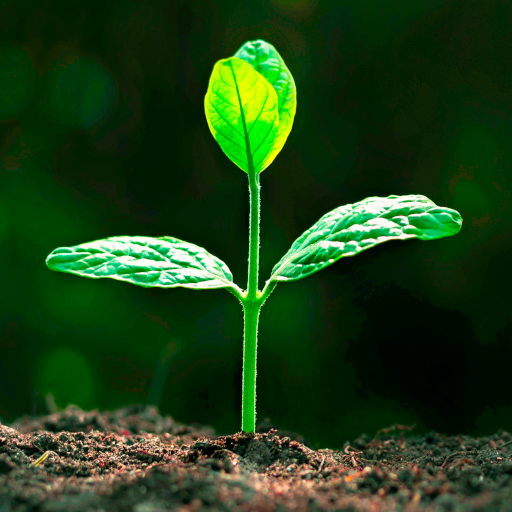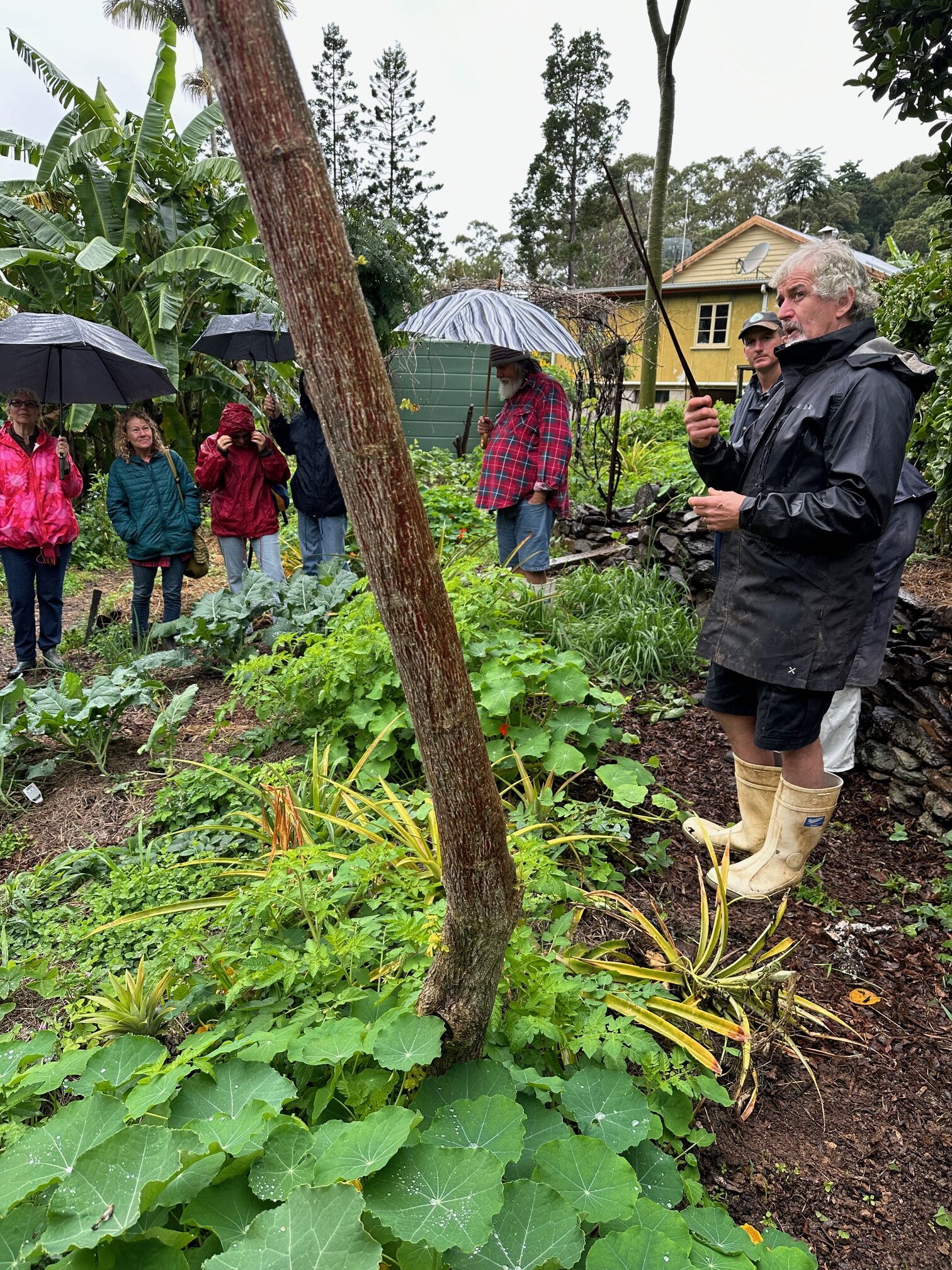Last weekend, a few members of the Permaculture group braved the wet weather to go on a farm walk at an established Permaculture farm owned by Tom and Will Kendall from PermEco. You can find them here: https://permeco.org/. This is a farm that Tom has been living on and turning into one of the best examples of permaculture I have seen. He started around 18 years ago, and the farm continues to evolve. Permaculture is like that, it’s a process that continues to change as the needs of the people change.
The farm is around 30 acres but only 10 acres are used, with the remaining being his wild zone (zone 5). On the arable area, animals are managed for meat and eggs, there’s a food forest, syntropic area and it manages to feed quite a few people, plus selling produce at the local markets.
The main vegetable garden is north facing which makes the most of the sun in the southern hemisphere. Legume trees are used to provide shade in summer and cut back in winter. A Mexican tree, which I can’t remember the name of, is particularly good as it grows very tall and provides filtered shade. There are ice-cream bean trees nearby but these are not as good in the garden as it’s not a tree that is easy to prune to a suitable shape and they are not deciduous. They have other uses in a permaculture system.
Swales supply water to different sections of the garden. House wastewater, laundry, shower and sink are all directed into different swales above and below the garden.
There is a staple starch section, which is mostly taro and coco yam.
The actual vegetable garden has reduced in size over the years and now they only grow what they need. Perennials are the main focus, with some annuals put in as needed.
There are only composting toilets on the farm – no septic systems at all. Human manure is composted and then used in the food forest. Two compost bays are used – one being filled and one full and waiting for 12 months. Human manure needs 12 months from the last deposit and this is a static compost, meaning that it’s not turned at all, as the pathogens are too dangerous to handle the compost until it’s completed the cycle. The bays need to be covered to prevent water run off and rather than use tin, they’ve used thatch for the roof. Thatch is made from vetiver grass and string made from palm leaf. It’s lasted quite well and looks good too. 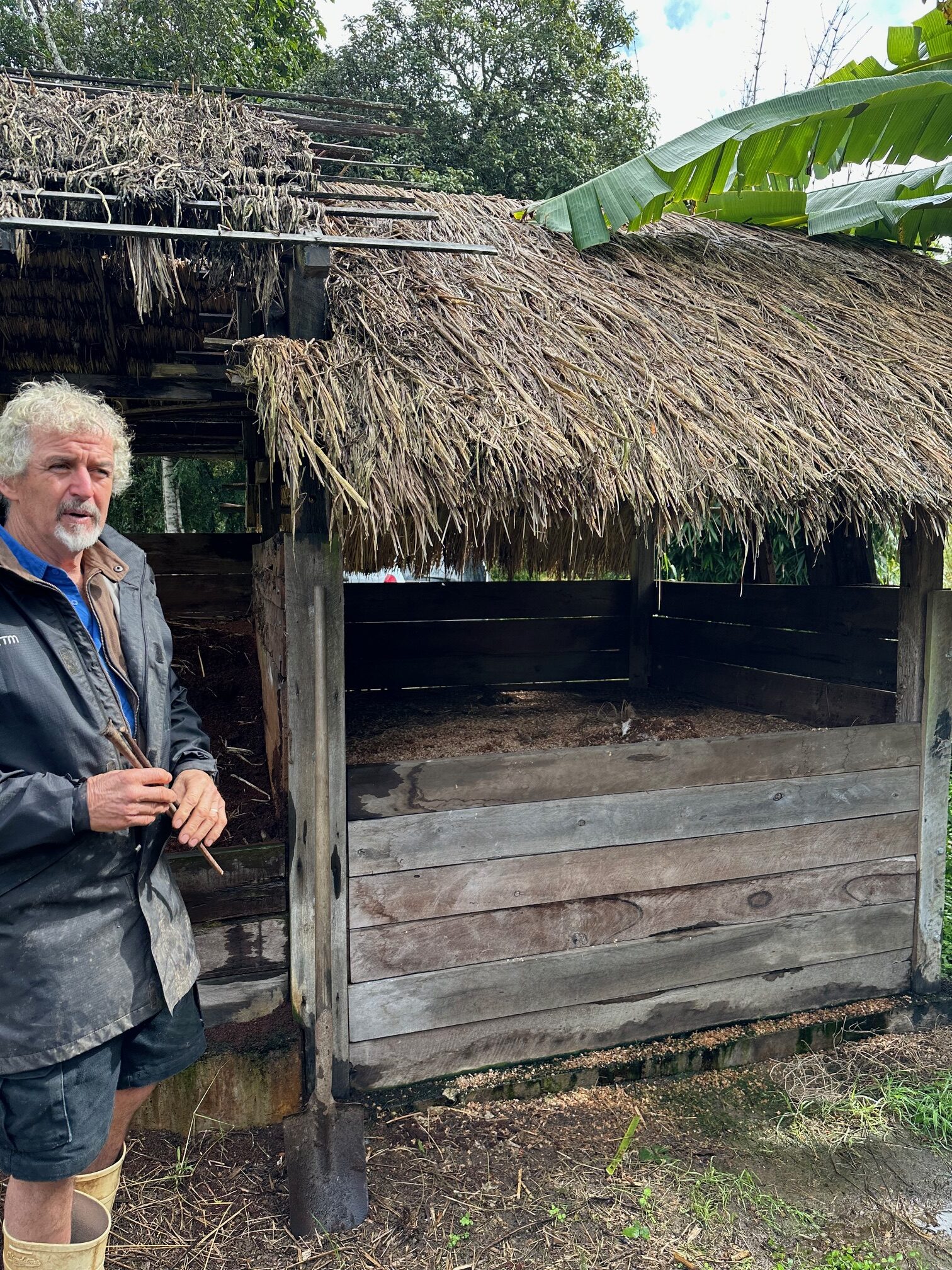
Food Forest has another swale above it, which is lined with vetiver grass. All swales in the garden and food forest have been done on the contour. There are lots of bananas. which are a cash crop for the farm. Due to the age of the food forest, some of the trees need to be cut out and so are chopped up for a thick fungal mulch. Mugwort and tulsi basil (lantana works too) have been used for biomass as they’re woody stemmed weedy plants. 
The farm had a very old well on it, which had started to cave in. This has been reinstated by cleaning it out and reformed with bricks. A solar pump is used to pump from this well.
When the Syntropic concept was first introduced into Australia, a trial plot was put in on the farm. In the early stages, garden beds were put in between the rows to grow annual veg. These rows are now too narrow as the syntropic row has matured. It was quite clear that the biodiversity in the syntropic rows assisted the vegetable growing – eggplant and capsicum grew so much better in the syntropic section than in the veg garden. One of the main principles of syntropics is that when you cut back the pioneer plant (reset) this releases a hormone that encourages growth in the plants nearby. Senescence is when a plant goes into seeding or death in a forest system, plants around it go into senescence too – the opposite of growth hormone. Tom gave an example of a banana palm that he didn’t cut down and the plants near it didn’t grow but where he cut out (reset) the other parts of the row, the plants took off.
There are many flocks of chooks as they have different purposes. Egg laying hens in one pen, breeding roosters and hens in another, teenagers in another. Then the hens that turn the cow manure (more on that below) are in another pen. Rather than have the chickens moving around on pasture, they are fed greens, although one pen has 4 separate pens where a mix of lucerne, dock, plantain, sorrel and chicory are planted. The chickens get this on rotation when it’s at the right stage to graze. There is a garden next to the chook pens which is just for chook greens – the ones mentioned above plus comfrey. The ideal would be to get 50 chooks a year to eat. Chooks are also fed a grain ration – 1 copra:1 laying pellet: 3 mixed chicken grain.
Goats have 6-8 paddocks to rotate through, which allows time for pasture to recover and to prevent a worm buildup. They are locked up at night and into the next day so they just graze when they go out rather than playing around. The goats get fed a grain ration as well as branches of various plants each morning. What remains of the branches are removed each day and then they get chipped weekly. The wood chip is a valuable resource on other parts of the farm. The goats don’t get fed the same plant each day. One day it’ll be icecream bean, another day something else and another day another plant – swapping it around means that they don’t get sick of the one plant and gives them diversity of browse. They certainly looked in very good condition.
The cows have 10 paddocks but they are divided using electric fencing so that they are moved to fresh pasture each day – this has increased his utilisation and rest, which in turn is helping to increase the diversity in the paddocks. The four cows get penned in a cement yard in the afternoon and overnight. This is to enable an easy collection of their poo, which is used to make biogas.
The cow manure is collected and put into the biodigester each morning. The manure is mixed with water to get a slurry and mashed with a large masher implement. This goes into a sealed chamber. The gas (methane) which comes off the manure slurry, is piped directly to the house and then the leftover slurry moves to another chamber and then through a pipe to a pit. Every week this pit is emptied into an area that the chickens scratch around and aerate, collecting any grass or weed seeds as they go. A system of turning this manually is maintained on a weekly basis with a different day each week that these moves are done. After a week, the last section is moved to a compost bay to continue to break down.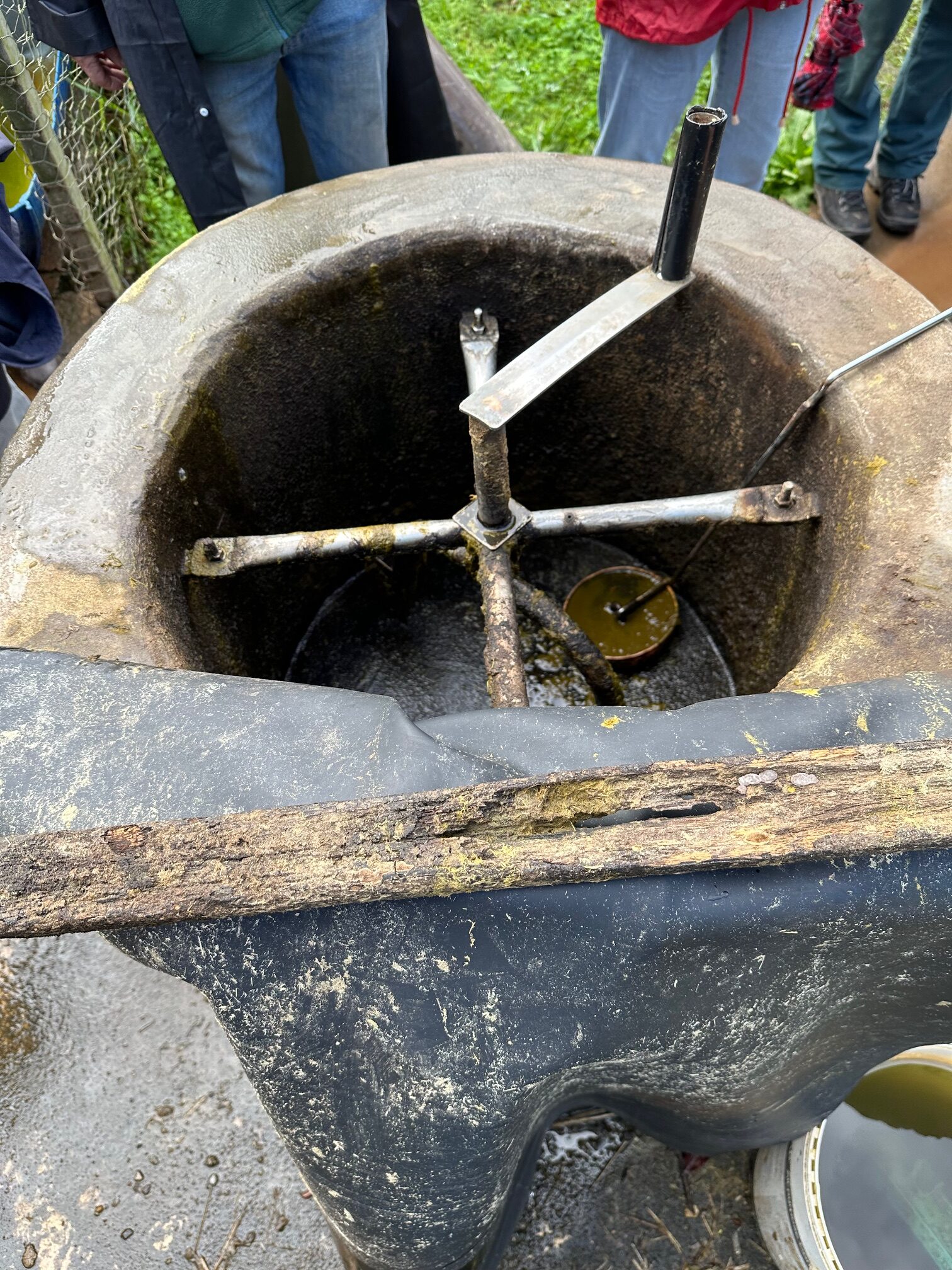
The tank above is where the cow manure slurry is put into. 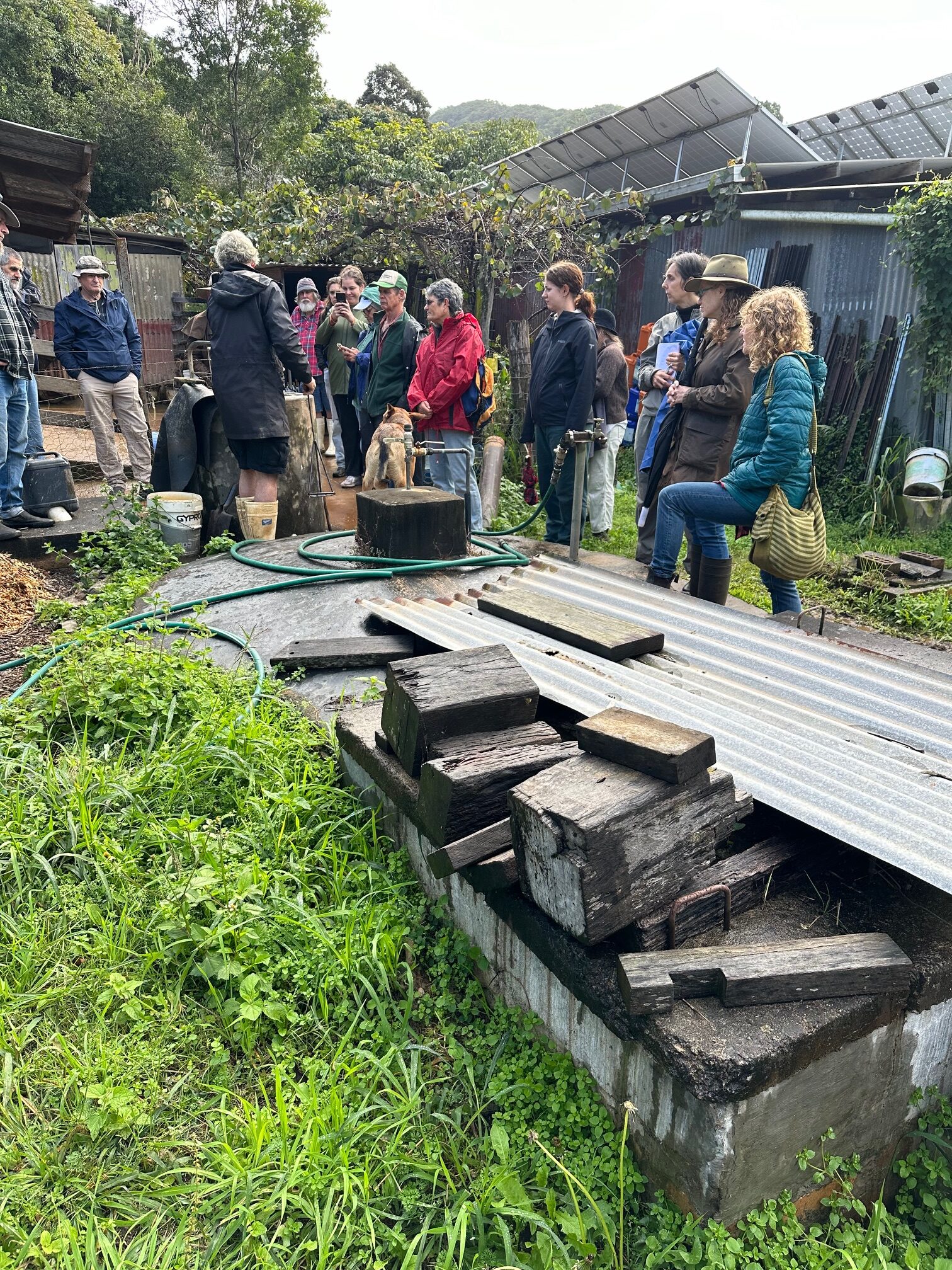
This tank is where the gas is collected (round tank at top) and then the waste runs into the square tank, before it gravity feeds to a chamber before going to the final collection pit.
The biogas is used for cooking and if that runs out, there are some rocket stoves that can be used. A rocket stove is set up with a still to distil water for the solar batteries.
One of the secrets of managing all the various and regular jobs, is to not let any of the jobs/chores get too big. For example, chipping the goat branches fortnightly rather than getting a huge build up which then becomes a very big job.
The most impressive thing for me about the day was meeting someone who walks the talk. Tom Kendall is a permaculture instructor and is a natural teacher. He explained everything so well. The land, the animals and the plants are used in a systematic way that encourages biodiversity and usefulness. The planted gardens and food forest are very diverse.
There were 20 people from the group in attendance and this surprised me. It was such a great opportunity to visit such an established permaculture farm. I for one am very grateful that I was one of the ones involved and I think it’s a shame more people didn’t go, although it was good for us that did go as we could hear and see everything! And lunch was amazing!
